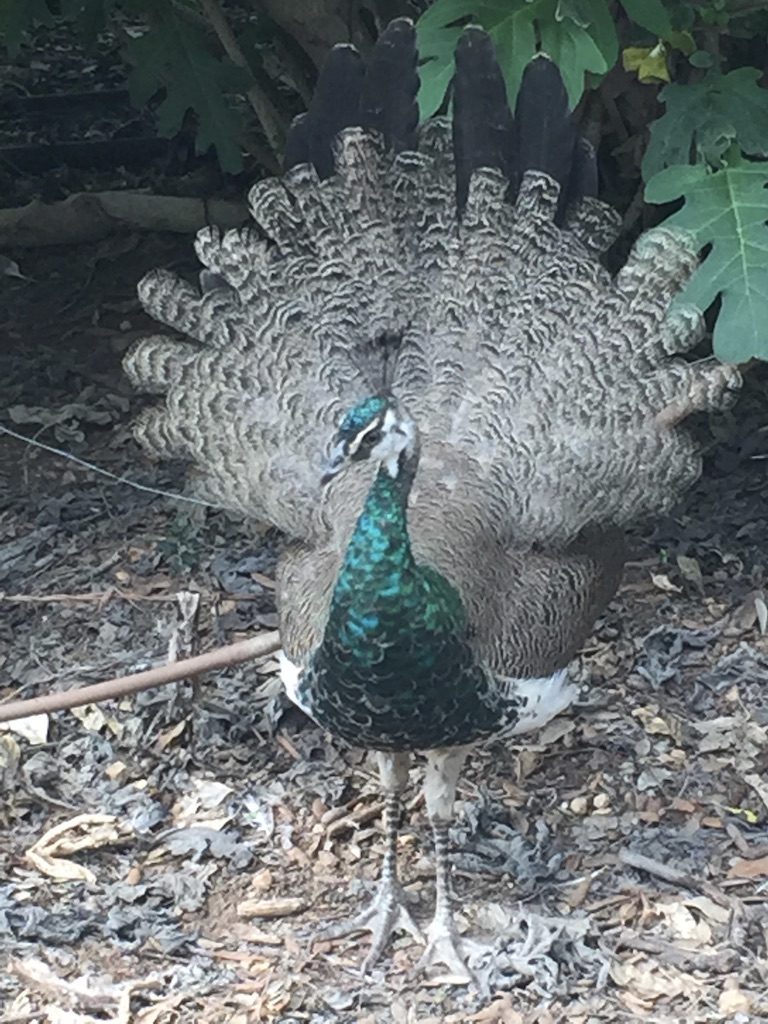
A lovely day for my final day in Malta. First port of call was costa’s famous basilica, famous for its survival after a bomb fell through the roof in 1942 but failed to explode. An Italian pilot was lightning his load and accidentally dropped it on the church but, as Maria quipped, since it was Italian in didn’t behave as it should have done, and failed to explode, fortunately since 300 people were attending mass inside the church. A replica of the bomb is on display – rather odd to see in a church. The Ro
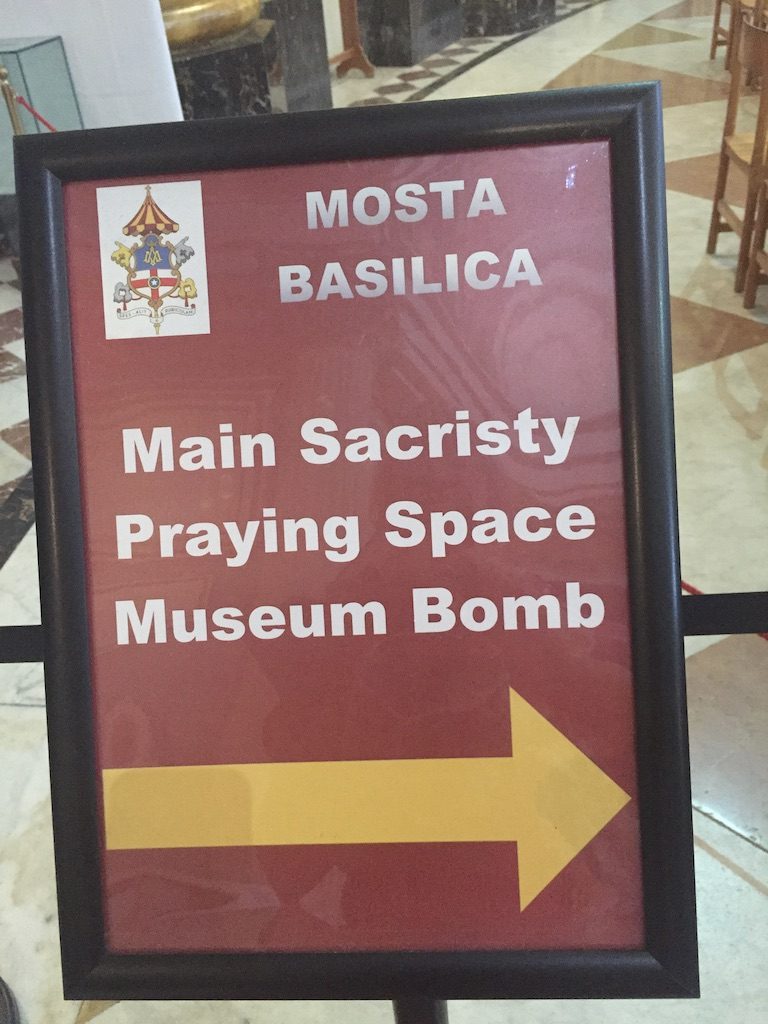
man Catholic Church was built in 1833-1860 and is based on the Pantheon in Rome. Leaving the church we only were allowed 25 minutes to climb up to the balcony in the dome, visit the WW ll bunkers and/or get morning coffee.

I opted for the bunkers, just outside the basilica and saw reconstructions of the life that the people seeking safety lived. Lace making, hairdressing equipment and sewing machines were all part of life underground.
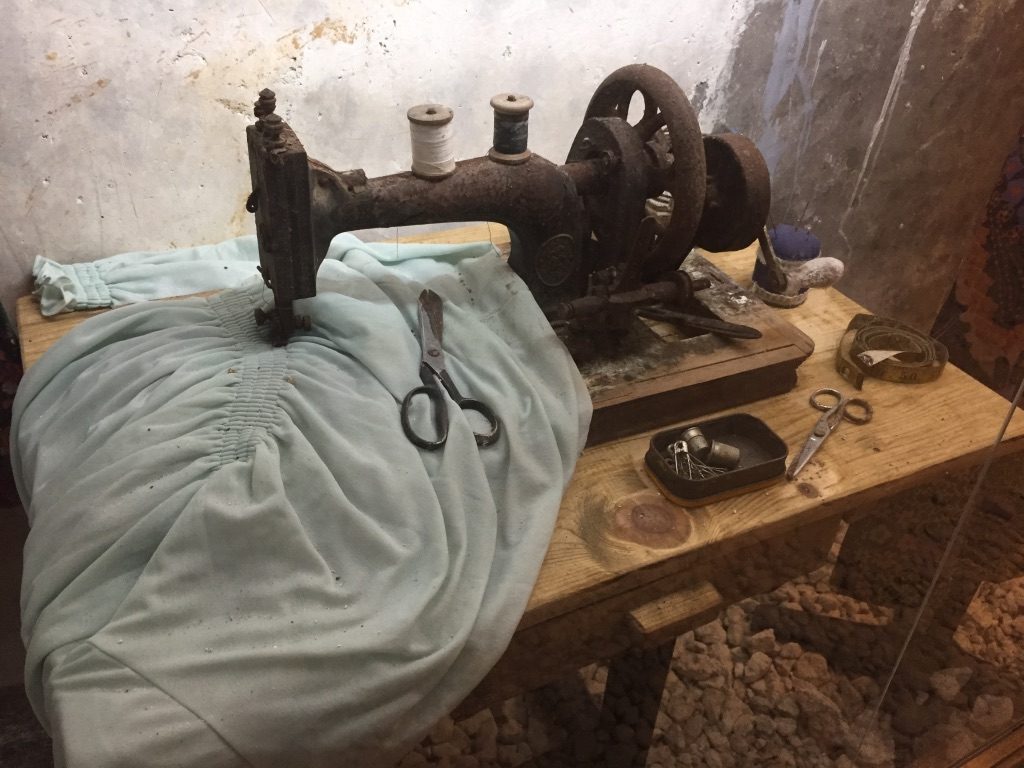
WWll bunker 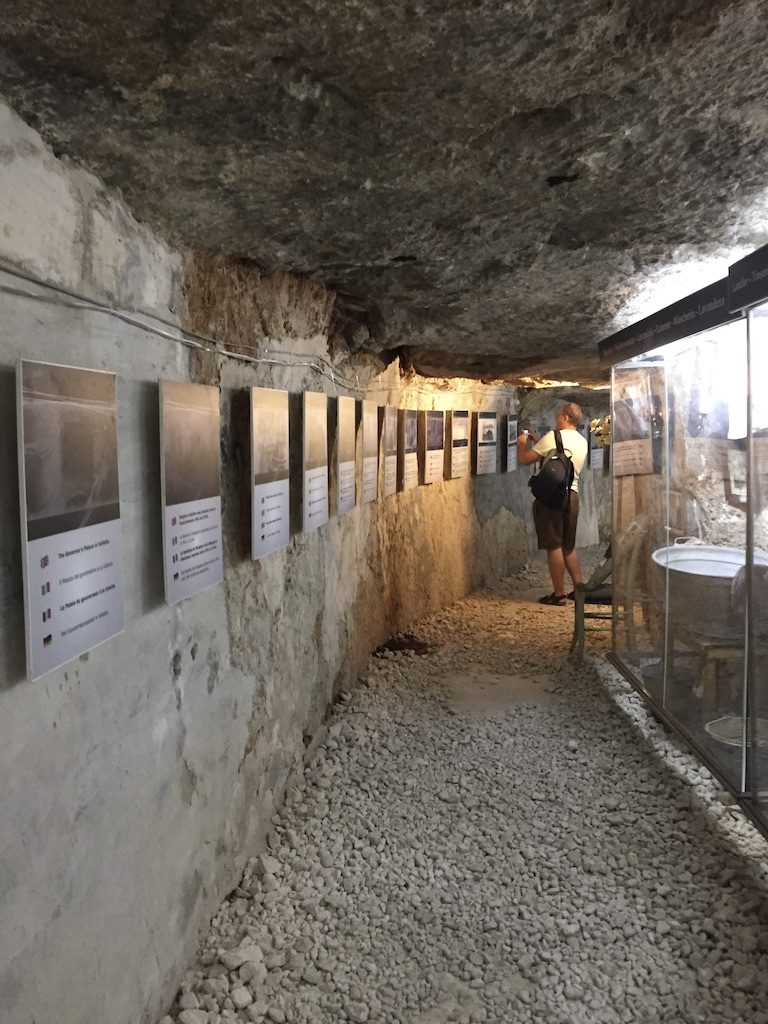
Then we were off to visit the San Anton Gardens in Attard. Because the towns in Malta are so densely populated every inch of land in the towns is taken up with building, apart from the few designated gardens which are open to the public. In fact apart from palm trees there are no trees on Malta and so there is no wood at all for building material.
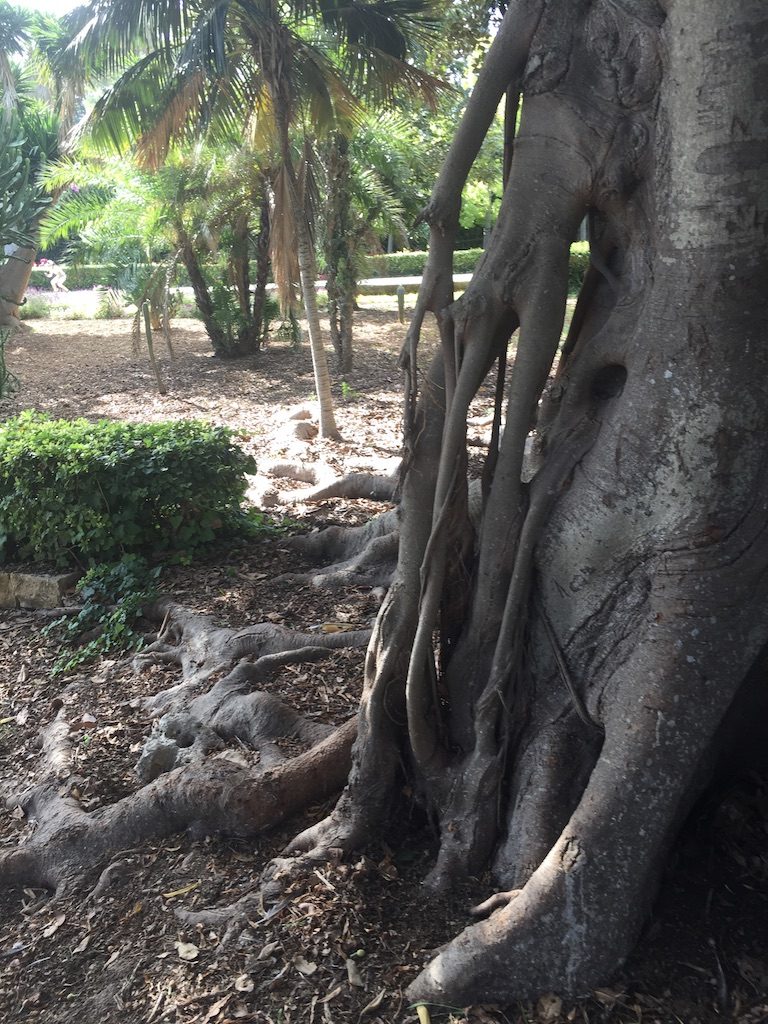
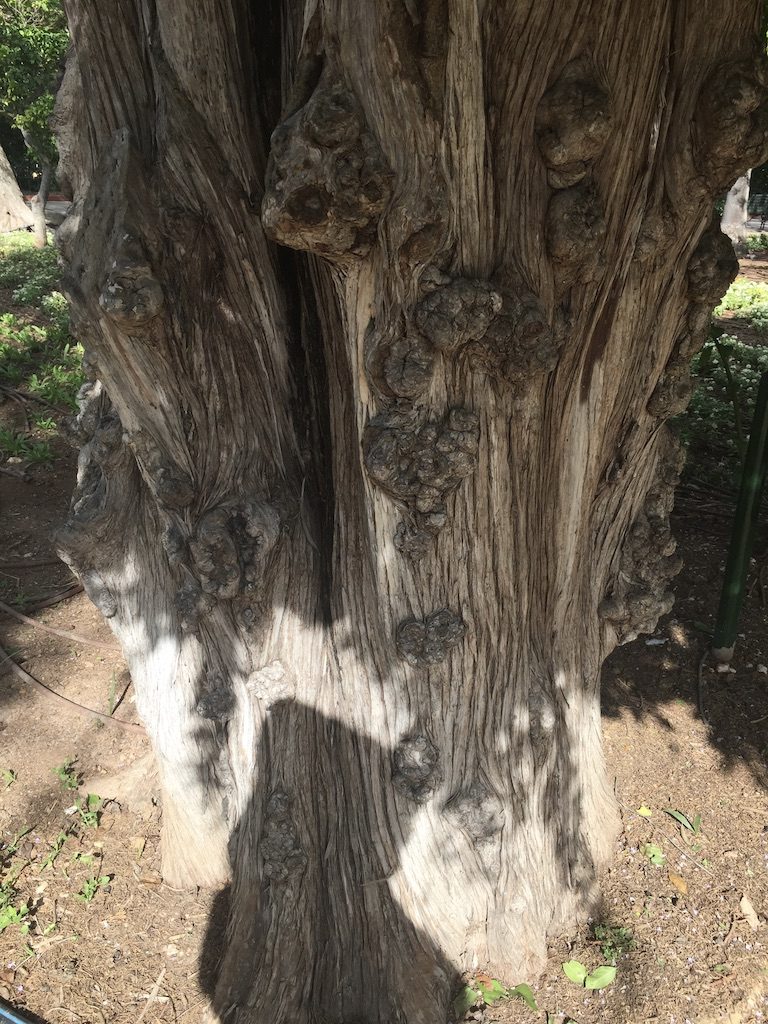
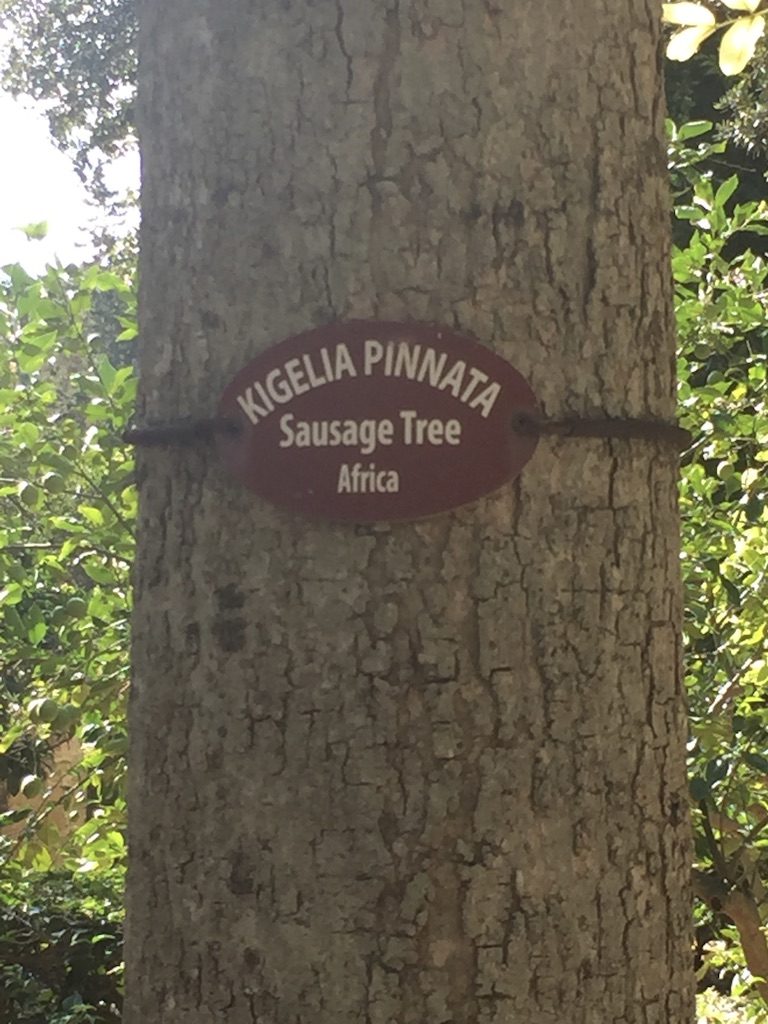
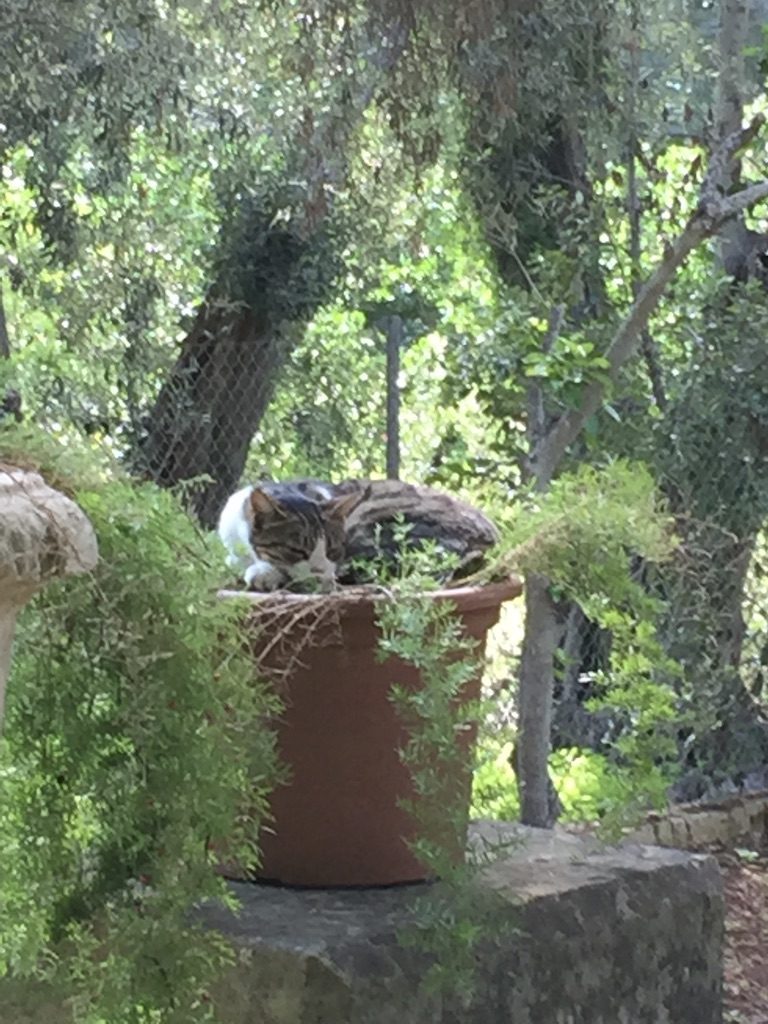
Maltese kitty 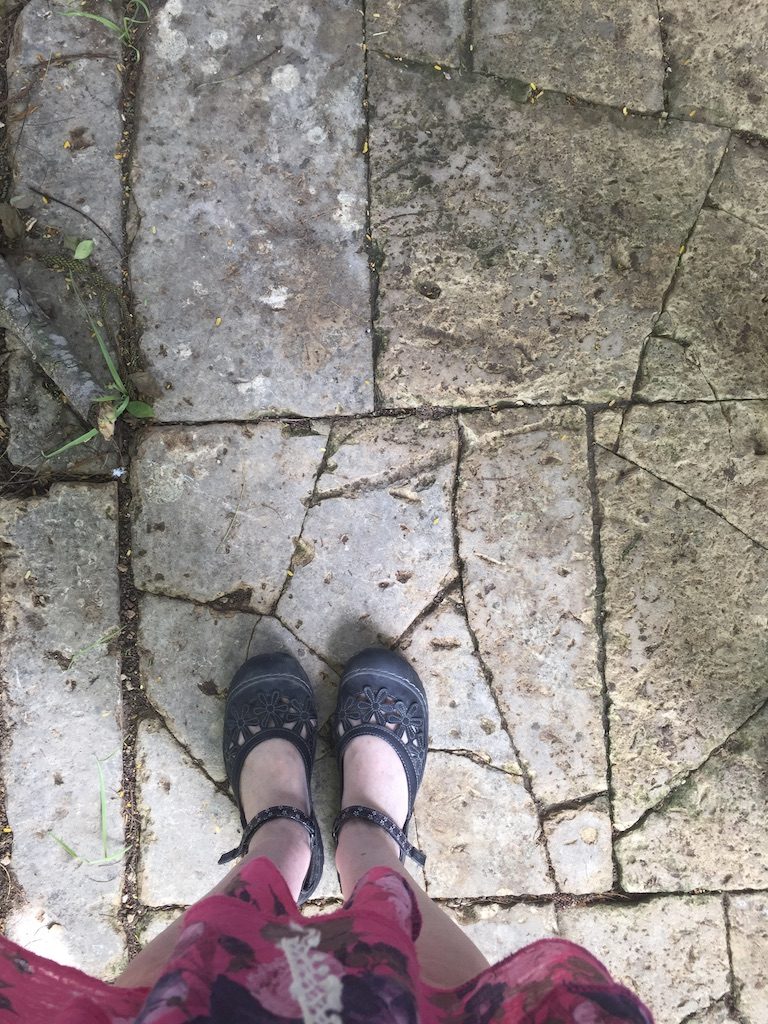
The gardens surround a palace that was originally built in the early 17th century and is now the residence of Malta’s prime minister. As I wandered around there numerous walkways I came to a gate manned by a soldier and at that moment a cavalcade of vehicles drew up and the soldier saluted. I guess the prime minister was in the car! The walled gardens were opened to the public in 1882 and it was lovely to see so much color in the flowers. I hadn’t realized until then how much I’d missed seeing colorful blooms. Of course the Maltese kitties were enjoying sunning themselves in the plant pots too. Several trees with the spiky and bottle-shaped trunks that I’d seen in Sicily were present and peacocks were strutting their stuff beneath them.
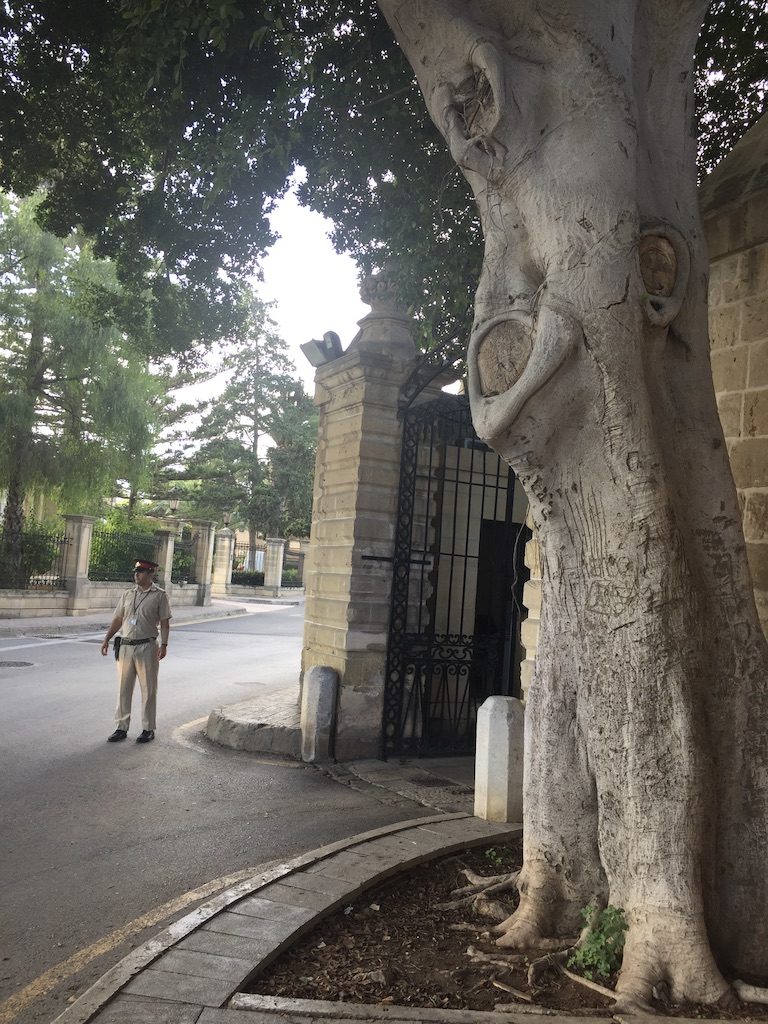
Lunch was at the coastal village of Marsaxlokk which is described as a typical fishing village, but the restaurants and street vendors have moved in and nowadays it’s a tourist haven too. Still, it was very very pretty with the traditional highly colored fishing boats and there were shoals of fish chomping on pieces of bread. Fishermen had their nets strewn along the quayside and on the menu for one outdoor restaurant, alongside the fried rabbit was octopus stew. I’d been holding out for a dish of mussels until I found a good place by the ocean so here was my opportunity since we were all free to find our own lunch.
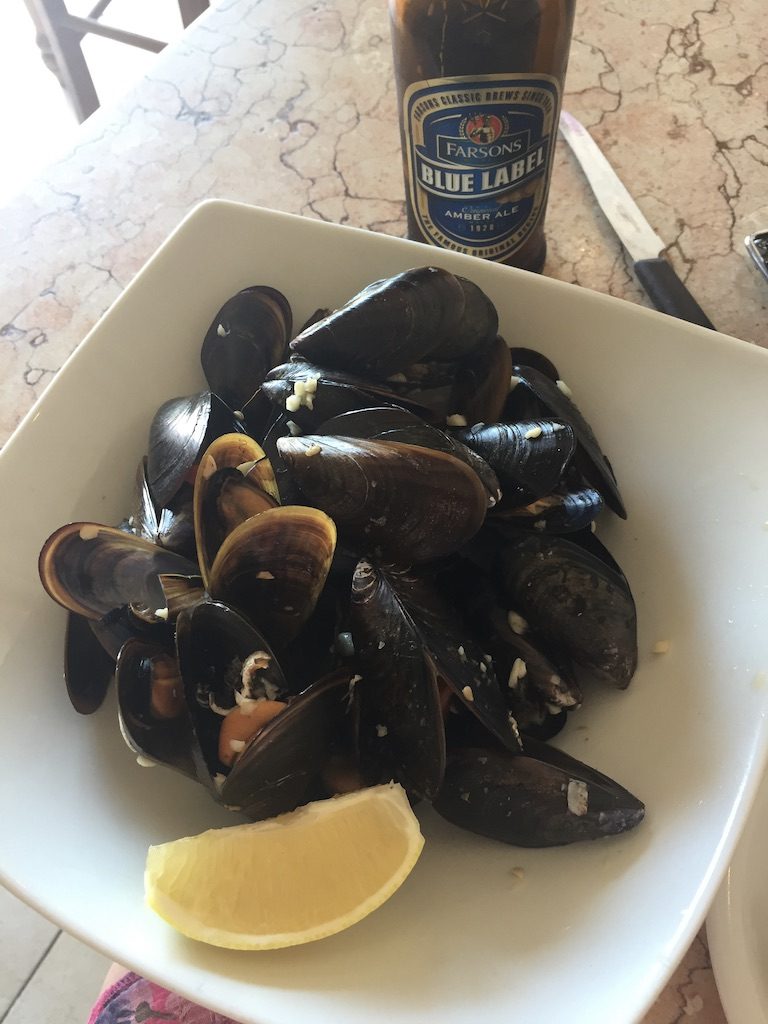
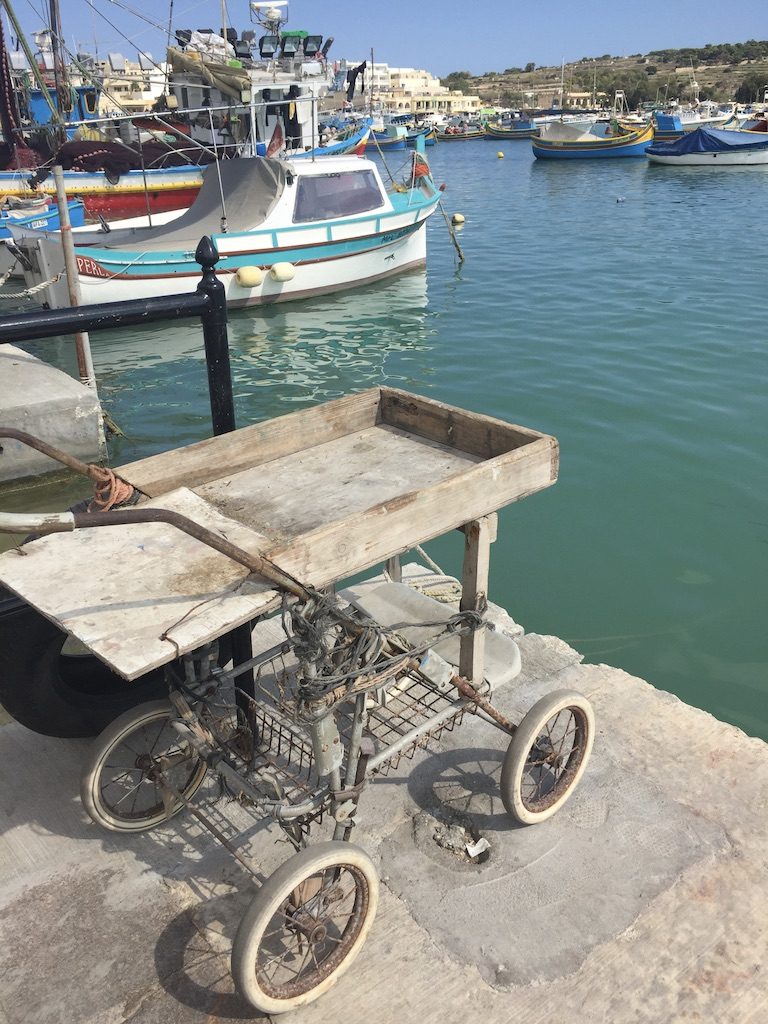
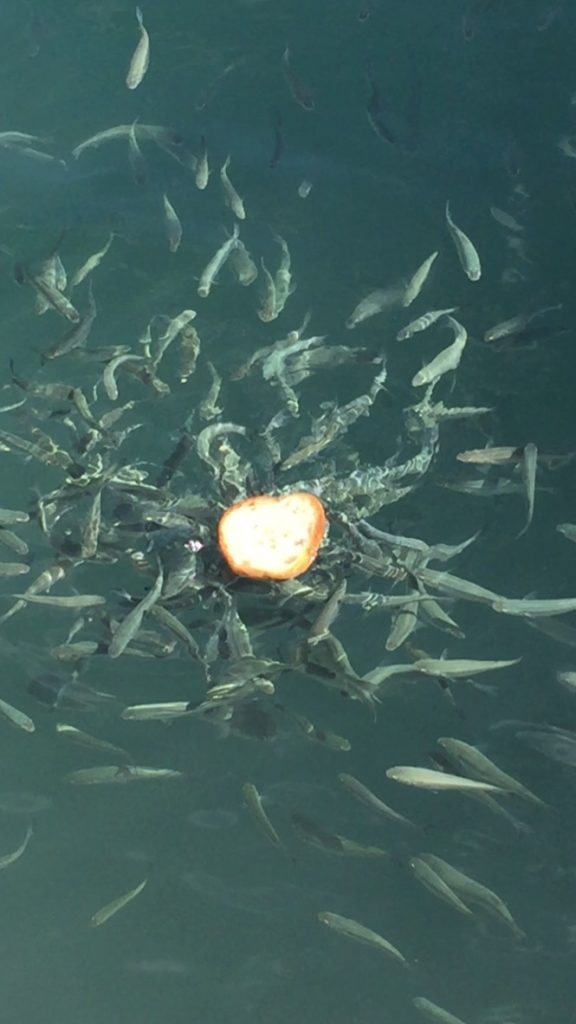
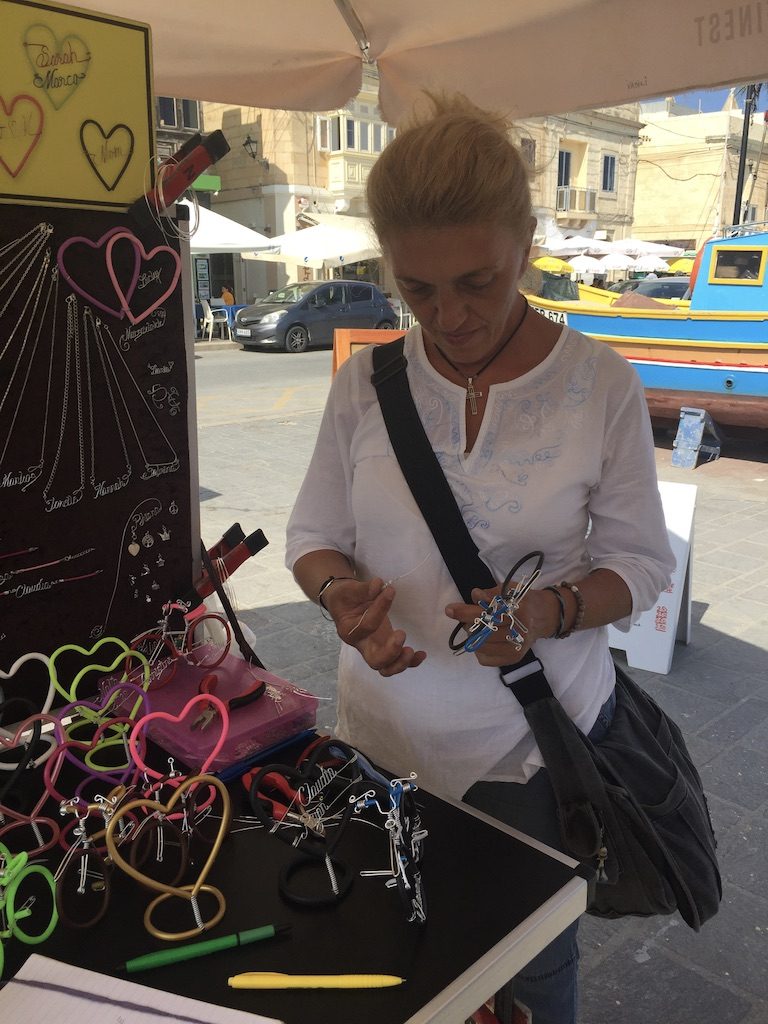
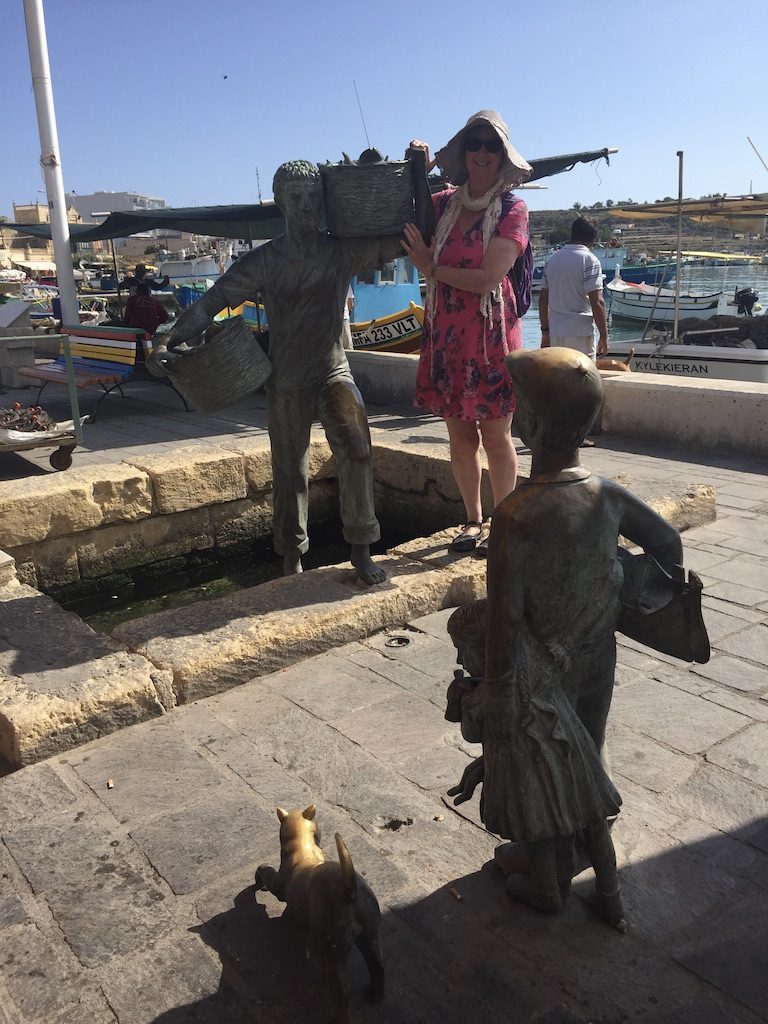
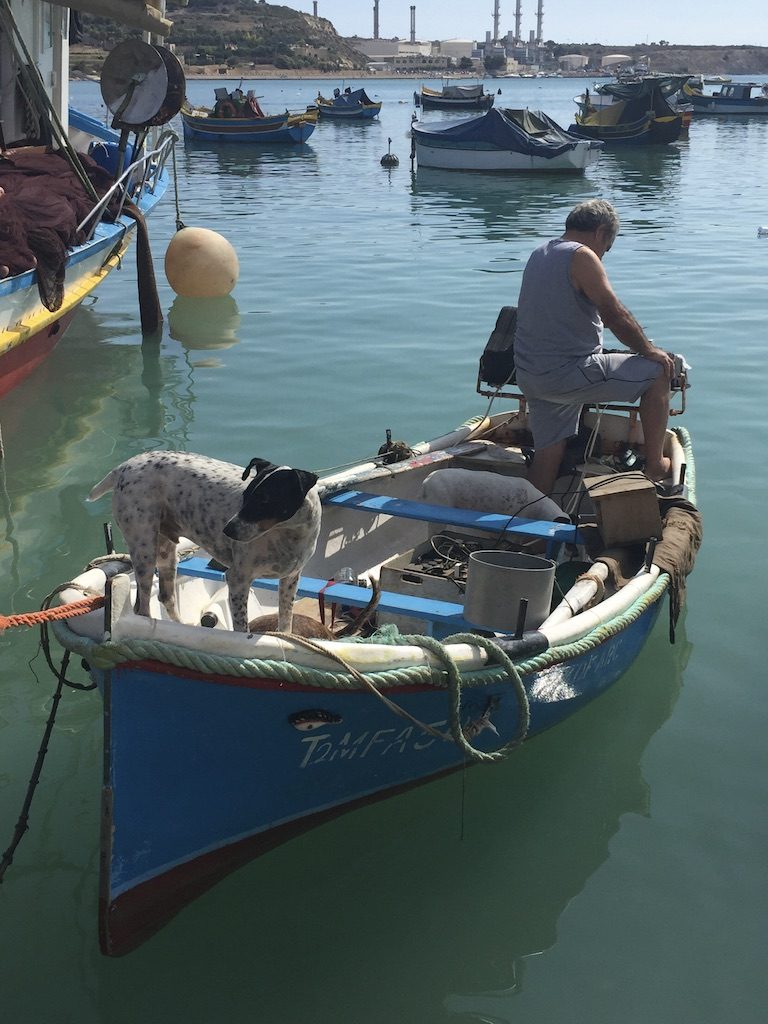
Doggies go for a sail 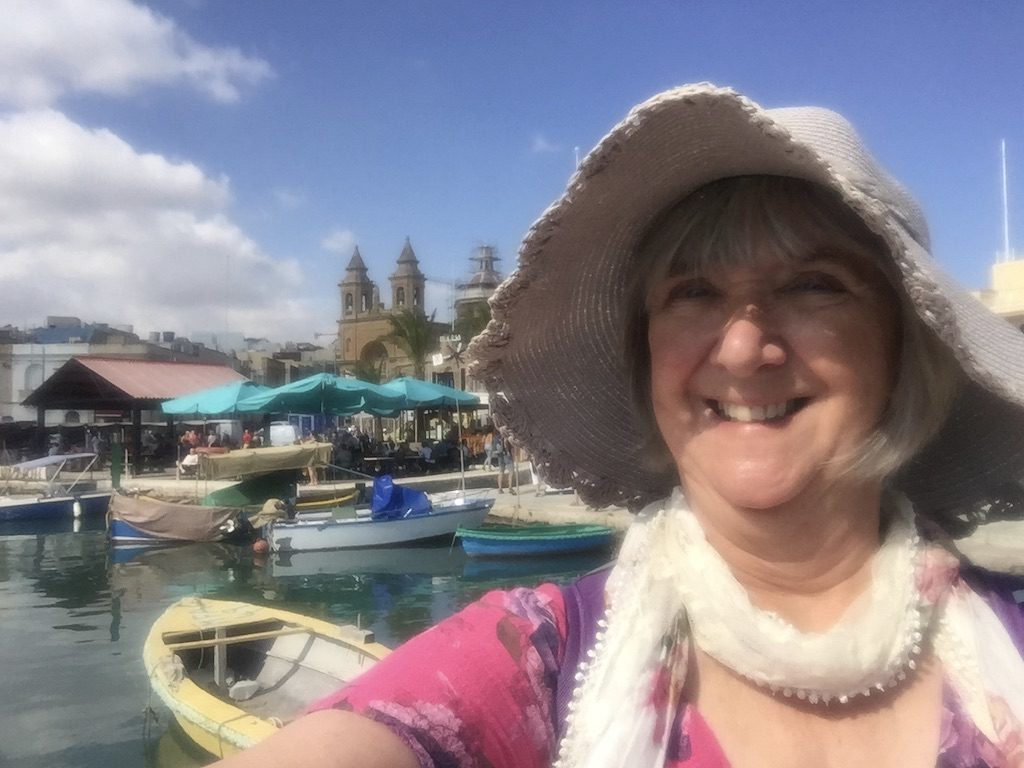
We spent the rest of the afternoon on a tour of the three cities of Senglea, Vittoriosa and Cospicua whose fortifications were built by the Knights of St John. Streets almost narrow enough for people on opposite balconies to shake hands were the order of the day with peeling paint and weathered stone – just my sort of place. The week after I’d got back from my trip I saw a quote from L.S. Lowry in the Manchester Art Gallery: “I seem to have a strong feeling towards decayed houses in deteriorated areas ….” Preparations were being made for the Superleague Triathlon event the next day and tents, camera men and portable toilets and barricades were being set up along our route. In the church of St Lawrence in Valletta there were several clothed skeletons reminding me of the catacombs in Palermo.
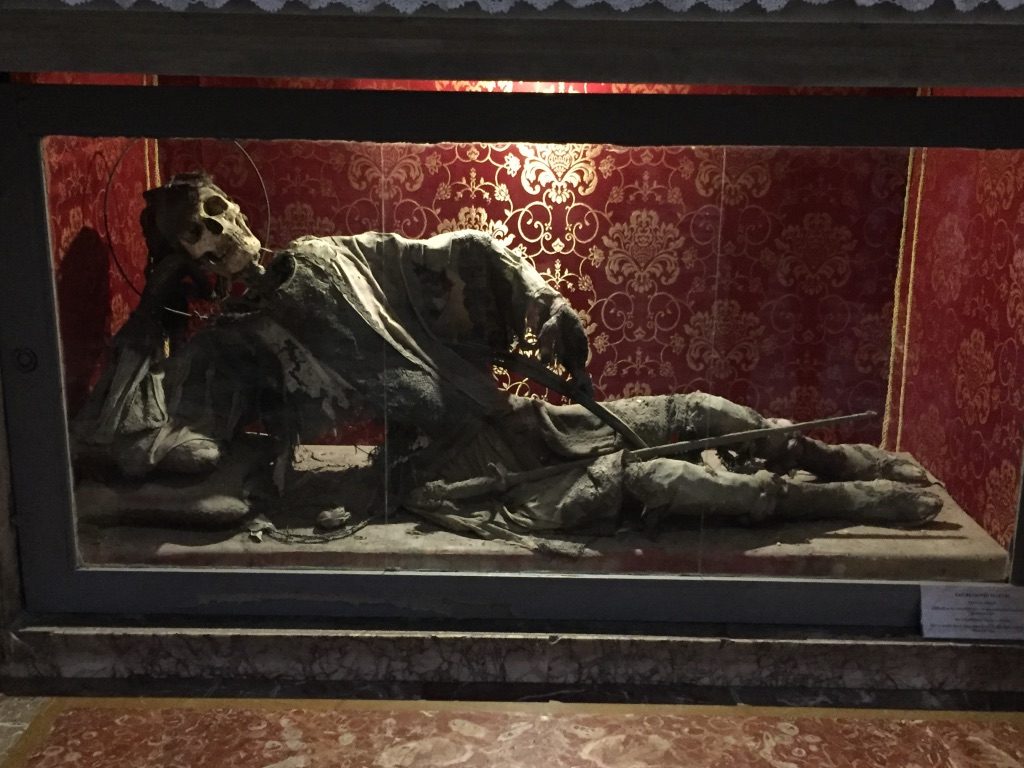
Hmm . . . 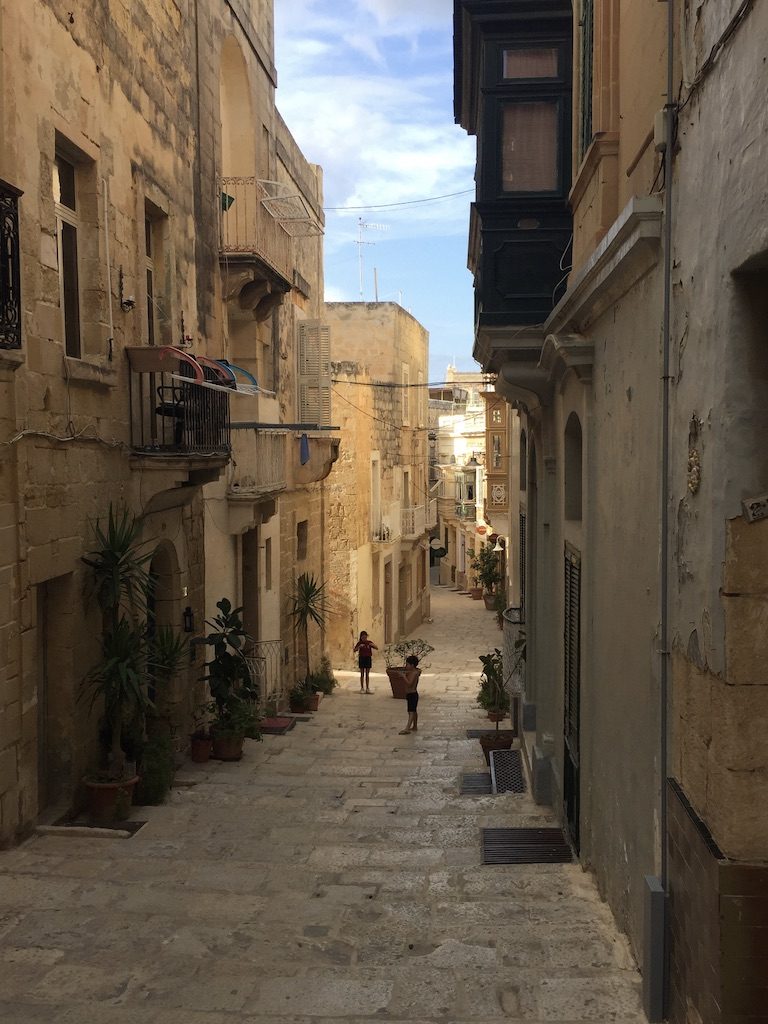
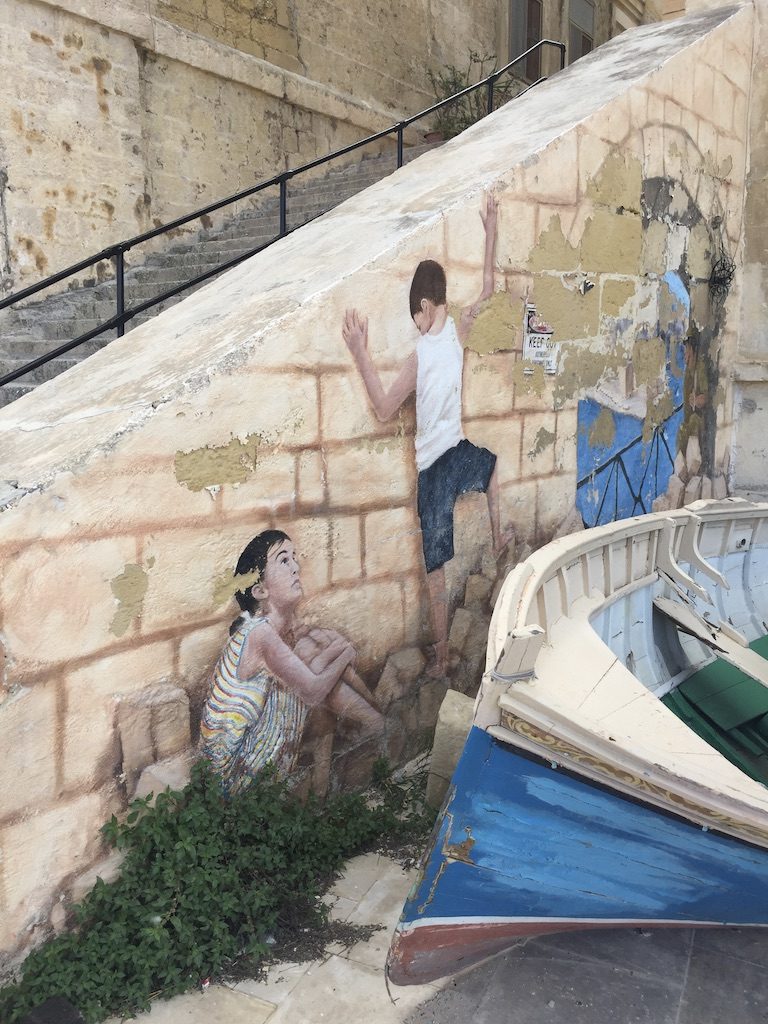
My favourite mural of the trip 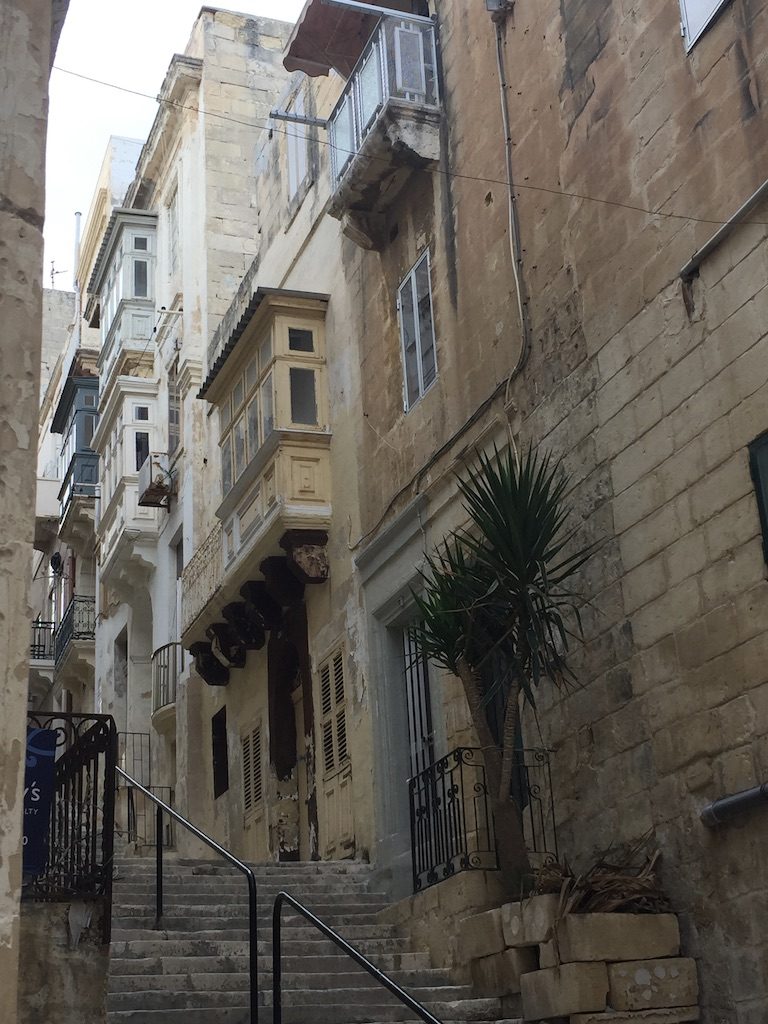
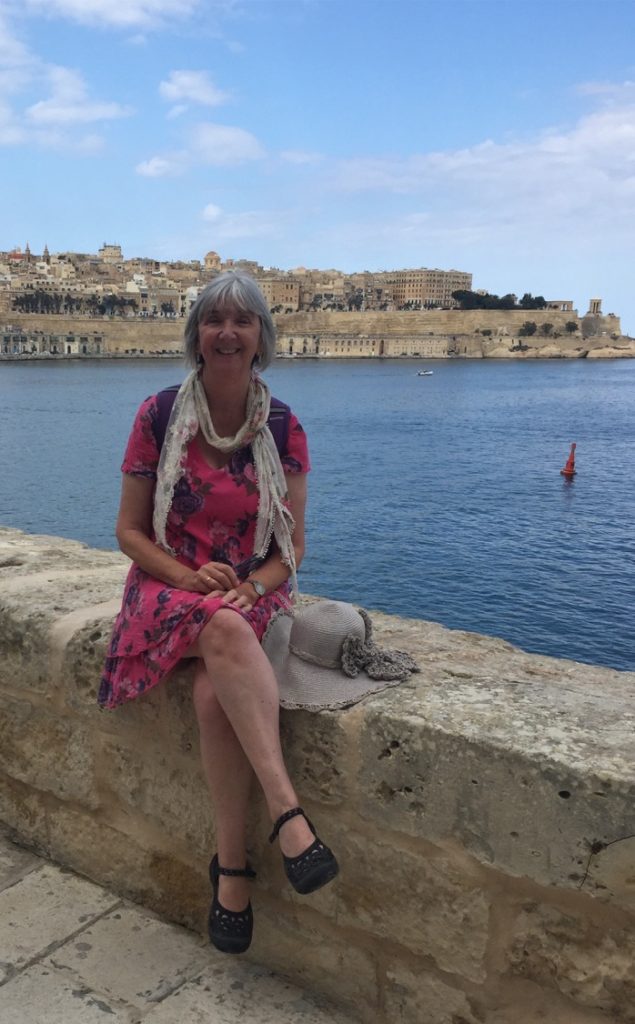
Our final dinner with the group was back in Sliema, at Piccolo Padre, a lovely ending to an interesting trip full of surprises.
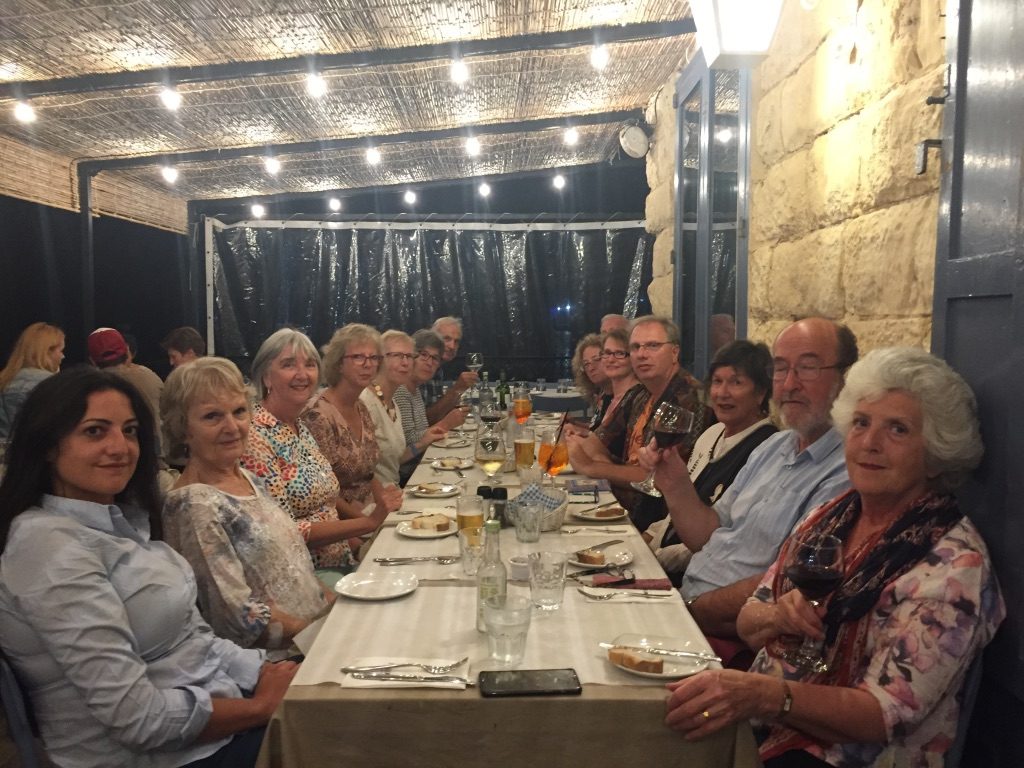
The next morning I left Malta, bound for Leeds/Bradford airport along with another member of the group, and had a trouble-free trip back to Hebden Bridge where the all the colours of Autumn had come to the town in the week that I’d been gone.
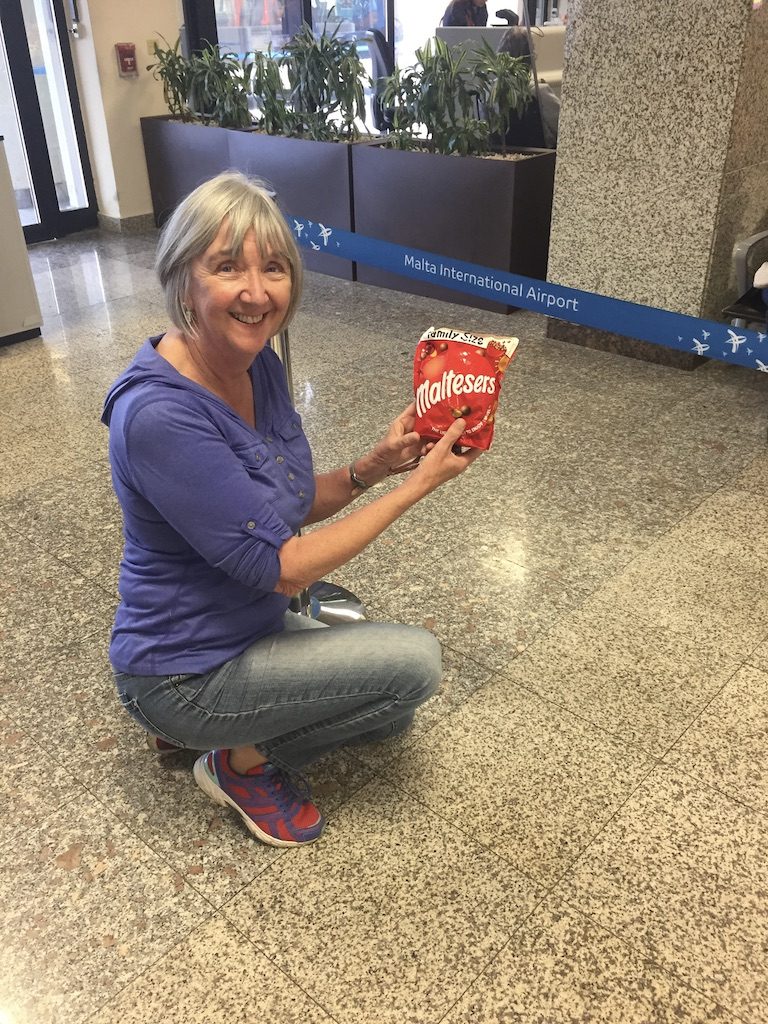
Just HAD to! 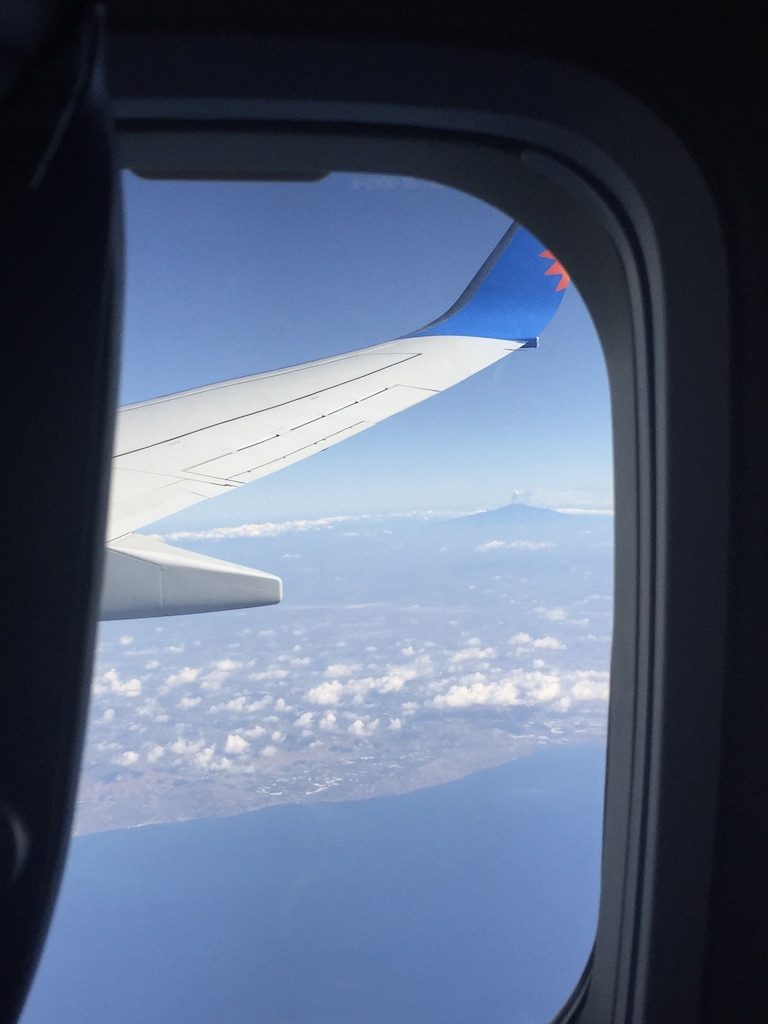
Etna’s erruptin g
Leave a Reply